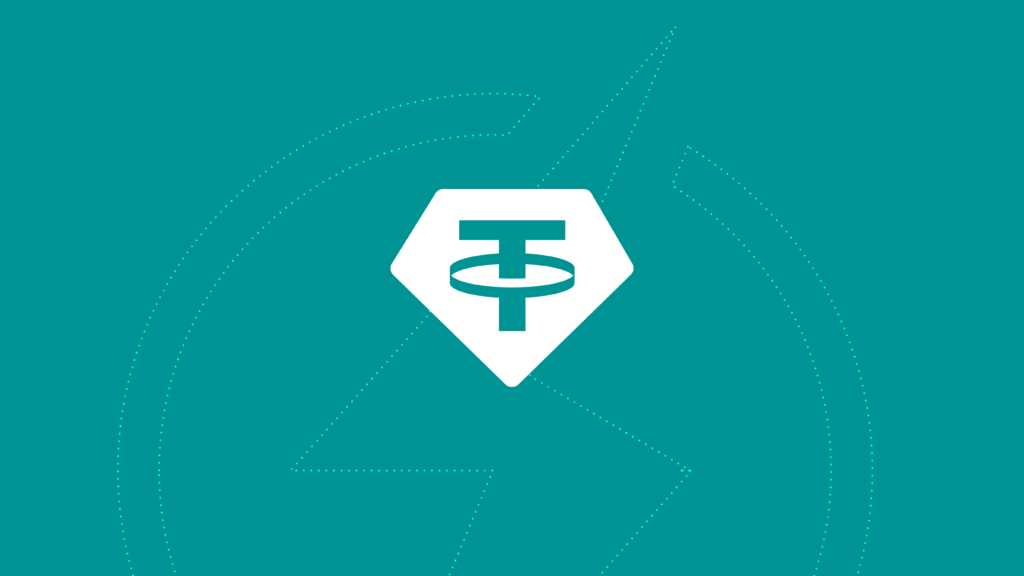Latest News
- Tether Purchased 8,888 BTC in Q1
- Metaplanet Increases Bitcoin Holdings to 4,046 BTC with Latest Acquisition
- $10.1B Floods Into Stablecoins in March — Sector Sees Major Capital Inflow
- Tether, MicroStrategy bought billions, yet bitcoin keeps falling
Current Price
The current price of USDT is $0.99992
Introduction
Have you ever wondered why Tether (USDT), despite its controversies, remains a titan in the stablecoin arena?
You’re likely familiar with its basic premise: each USDT unit aims to be worth exactly one US dollar, providing a stable digital currency alternative amidst the often turbulent crypto market.
This stability comes with its perks, especially for traders seeking refuge from volatility.
However, Tether’s story isn’t without its shadows, including doubts about the actual backing of its coins and legal skirmishes that have sparked concern.
As we peel back the layers, you might find the complexities of Tether both intriguing and essential to understanding its pivotal role.
Why do these issues matter to the average crypto user, and what could they mean for the future of digital finance?
Let’s find out…

Quick Overview
- Tether (USDT) is a stablecoin pegged 1:1 to the US dollar, aiming to minimize cryptocurrency volatility.
- It is backed by reserves, including cash and cash equivalents, to maintain its dollar peg.
- Tether is subject to regular audits to verify its reserve claims, enhancing transparency.
- The stablecoin facilitates quick transactions with generally lower fees, bridging fiat and digital currencies.
- Despite its market stability, Tether has faced controversies over reserve transparency and legal challenges.
Here’s a short video explaining more about USDT:
Tether’s Background and Evolution
Tether, often recognized as the first widely used stablecoin, was launched in 2014. It’s operated by Tether Limited, based in Hong Kong. The idea was simple: create a digital currency tied to traditional fiat currencies. This link keeps Tether stable compared to other cryptocurrencies.
Tether’s peg to the fiat currency, like the US dollar, gives it a steady value. You don’t see the wild price swings that other cryptocurrencies experience. It’s this stability that has attracted a lot of users, making Tether a giant in the stablecoin market.
Today, Tether is the largest stablecoin by market capitalization. It’s a key player among stable cryptocurrencies, offering a bridge between the world of blockchain networks and traditional finance. Other coins, like USD Coin, follow in Tether’s footsteps but Tether remains at the forefront.
The growth of Tether reflects a broader trend. People are looking for safer, more stable options in the crypto world. They want the benefits of digital currency without the risky fluctuations. Tether provides that, making it a fundamental part of blockchain transactions worldwide.
As you explore stablecoins, Tether’s role and impact are essential to understand.

How Tether Maintains Its Peg
To maintain its stability, Tether is anchored to the US dollar at a 1:1 ratio. This means each Tether (USDT) you hold is meant to be worth exactly one US dollar.
Here’s how Tether Limited guarantees this stays true, especially during market volatility:
- Dollar Reserves: Tether Limited claims to back every USDT with equivalent dollar reserves. This includes cash and cash equivalents, helping guarantee they can meet withdrawal demands.
- Commercial Paper: A portion of Tether’s reserves is held in commercial paper, a form of short-term unsecured debt issued by companies. This adds a layer of real-world assets to the backing.
- Regular Audits: To comply with regulatory standards and guarantee transparency, Tether undergoes periodic audits. These audits aim to verify the actual reserves Tether claims to hold.
- Cash Equivalents and Real-World Assets: Besides cash, Tether’s reserves include other cash equivalents and real-world assets, providing a buffer against market shifts.
- Regulatory Compliance: Tether works to adhere to legal and regulatory requirements in jurisdictions it operates in, enhancing its credibility as a safe investment.

Advantages of Using Tether
Using Tether offers several distinct advantages, particularly in the domain of digital transactions. As a stablecoin, it’s tied to stable currencies like the US dollar, reducing the risk you face from extreme volatility common in the crypto market. This makes Tether tokens a stable asset to hold compared to traditional cryptocurrencies.
You’ll find that transaction fees with Tether are generally lower than with other digital currencies. This can save you money, especially if you’re frequently trading or transferring funds.
Additionally, the transaction speed is another plus. Tether transactions are processed quickly, letting you move funds without the lengthy wait times you might experience with other cryptocurrencies.
Tether also bridges the gap between fiat currencies and cryptocurrencies. It allows you to enjoy the benefits of digital currencies while using a value that’s pegged to a more familiar and stable asset.
This feature is particularly useful in trading pairs in the crypto market. It provides a consistent valuation base, making it easier for you to assess market movements and trade with confidence.

Controversies and Challenges
Despite its benefits, Tether has faced significant scrutiny and criticism. As a stable coin designed to bridge the gap between traditional banks and the crypto industry, it holds a significant market share. However, several issues have raised concerns:
- Transparency Issues: Questions linger about the actual reserves backing Tether, affecting trust.
- Legal Battles: Tether has been embroiled in legal disputes questioning its operations and the relationship with crypto exchanges.
- Redemption Concerns: Users have faced hurdles with redemption requests during periods of market stress, testing its stability.
- Wallet Vulnerabilities: Like any crypto asset, Tether wallets are susceptible to security risks, impacting user confidence.
- Market Manipulation Accusations: Accusations have surfaced about Tether’s role in manipulating crypto market prices, especially during extreme fluctuations.
These challenges are essential for you to take into account, especially if you’re deeply integrated into blockchain ecosystems or rely heavily on your Tether wallet for daily transactions.
The stability of a stable coin is vital, not just for individual investors but also for the broader health of the crypto exchange landscape. Being aware of these issues can guide your decisions in this dynamic sector.
Tether’s Impact on Cryptocurrency Market
Tether markedly influences the cryptocurrency market, often acting as a stabilizer during volatile periods. As the largest stablecoin, it’s tied to the US dollar, providing a sense of security you’ll appreciate. Its role is essential, especially on days when other cryptocurrencies swing wildly.
You’ll find Tether on nearly all major cryptocurrency exchanges. Its daily trading volume is massive, making it a popular stablecoin among crypto traders. This availability and volume help maintain liquidity in the cryptocurrency ecosystem, which is critical for both large and small investors.
One key aspect of Tether’s impact involves how much of the token is in circulation. With millions of USDT circulating, it ranks high among cryptocurrencies regarding market presence. This extensive circulation underscores its importance and the trust it has garnered.
Concerning stablecoins, Tether offers you a safer harbor during market turmoil. It’s a preferred option for storing value without exiting the crypto space. Whether you’re using any type of cryptocurrency wallet, Tether remains accessible and useful.
In short, Tether’s role in the cryptocurrency market is multifaceted. It not only aids in daily trading but also supports the market’s health by providing stability and liquidity.

Frequently Asked Questions
Can Tether Be Used for Microtransactions?
Yes, you can use Tether for microtransactions. It’s stable and has low fees, making it ideal for small purchases. Just check the platform’s minimum transaction limits to guarantee it fits your needs.
How Does Tether Handle User Privacy and Data?
Tether values your privacy but remember, there’s no such thing as a free lunch. They collect some personal data during transactions to comply with legal standards and enhance security measures.
What Digital Wallets Support USDT Storage?
You can store USDT in several digital wallets including MetaMask, Trust Wallet, and MyEtherWallet. These support both security and easy access, making them solid choices for managing your USDT holdings.
Are There Any Geographic Restrictions on Using Tether?
Yes, there are geographic restrictions on using Tether. Some countries have banned or limited its use, so you’ll need to check if it’s available in your location before you decide to use it.
How Does Tether Compare to Other Stablecoins in Liquidity?
Tether tops the charts in liquidity compared to other stablecoins. It’s widely accepted and trades heavily, giving you smoother transactions and better stability. You’ll find it versatile for trading and everyday use.
Conclusion
As you consider using Tether, remember it’s like a digital dollar always aiming for a one-to-one value with the USD. Quick and cost-effective, it’s ideal for stable trading.
However, be aware of its past controversies, such as the 2019 inquiry questioning its reserve transparency.
Tether’s influence is undeniable, bridging traditional finance and crypto markets, but weigh the benefits against potential risks to make an informed choice.

